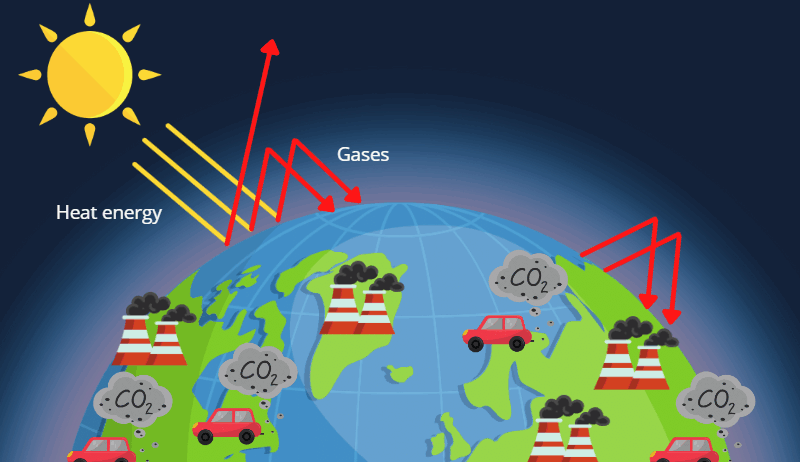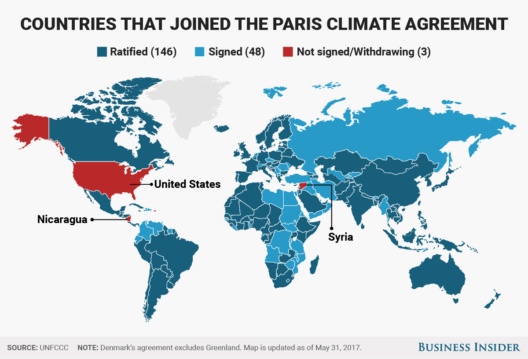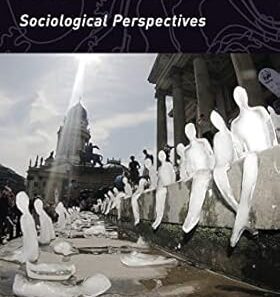Greenhouse gases (GHGs)—the insidious culprits lurking in our atmosphere—play a paramount role in the phenomenon of global warming. They are pivotal to a complex interplay of processes that dictate Earth’s climate, and yet their operations often elude public understanding. On the surface, these gases like carbon dioxide (CO₂), methane (CH₄), and nitrous oxide (N₂O) are naturally occurring substances, integral to life on Earth. However, anthropogenic activities exacerbate their concentrations, significantly altering the planet’s thermal equilibrium. To fully grasp the implications, it is essential to examine how GHGs instigate warming, propelling us towards a climate emergency fueled by pollution.
The greenhouse effect is the foundational mechanism by which GHGs cause global warming. This natural process involves the absorption of infrared radiation emitted by the Earth’s surface. After solar radiation reaches the planet, a portion is reflected back into space, while the remainder is absorbed, warming the Earth. GHGs trap some of this heat in the atmosphere, a phenomenon akin to the function of glass in a greenhouse, hence the name. This cyclical absorption and re-radiation contribute to a habitable climate. However, the quandary arises when human activities—such as burning fossil fuels, deforestation, and industrial processes—introduce an excessive volume of these gases, amplifying the greenhouse effect to perilous levels.
Anthropogenic pollution is a fundamental contributor to increased atmospheric concentrations of GHGs. The combustion of fossil fuels for transportation, electricity generation, and heating releases substantial amounts of CO₂. In fact, according to estimations, fossil fuel combustion accounts for approximately 70% of total GHG emissions. Furthermore, carbon-intensive industries, including cement production and metal smelting, add a considerable emissions burden. Such activities not only release GHGs but also emit particulates, which can have local cooling effects, thus contributing to a more complex climate dynamic globally.
Methane, another formidable GHG, is produced during the decomposition of organic materials in landfills, the production and transport of coal and oil, and from agricultural practices, particularly livestock farming. Methane possesses a global warming potential more than 25 times greater than CO₂ over a 100-year period, establishing itself as a short-lived but potent player in climate change. When one considers livestock farming alone, it’s alarming to note that methane emissions from enteric fermentation represent a significant fraction of global emissions. The urgency to reconsider dietary choices and agricultural practices cannot be overstated; they have dire implications for GHG concentrations and climate stability.
Additionally, nitrous oxide, primarily derived from agricultural application of synthetic fertilizers and the burning of fossil fuels, is another GHG that stealthily escalates warming. Despite being present in smaller quantities, nitrous oxide is approximately 298 times more effective than CO₂ at trapping heat in the atmosphere over a century. Hence, the emissions profile of a seemingly benign activity—like fertilizing crops—can be deceptive when it comes to its long-term impact on global warming.
Pollution, particularly from GHGs, interlaces with other environmental crises, exacerbating the situation. For instance, the burning of fossil fuels not only increases CO₂ concentrations but also generates air pollutants harmful to human health and ecosystems. This duality underscores the interconnected nature of climate issues: the very pollution that fuels global warming simultaneously deteriorates air quality, posing a health hazard and straining resources. Such a reality compels a reevaluation of energy sources, urging a transition towards cleaner alternatives, such as renewables, which possess the potential to mitigate both GHG emissions and pollution.
In light of these intricate relationships, it is crucial to advocate for systemic change at individual, community, and governmental levels. Policies aimed at reducing emissions can catalyze essential transformations. For instance, embracing sustainable agricultural practices can significantly diminish methane and nitrous oxide outputs. Improved waste management techniques, such as composting organic refuse, can reduce methane emissions from landfills. Such measures, while fostering sustainability, also engender a more circular economy, reducing reliance on fossil fuels.
Moreover, innovative technological advancements hold promise in mitigating GHG emissions. Carbon capture and storage (CCS) technologies can aid industries in trapping CO₂ emissions before they can enter the atmosphere. The electrification of transportation systems, alongside the integration of renewable energy sources like wind and solar, can drastically curb fossil fuel dependence. Each incremental advancement in technology and policy not only promises reductions in GHGs but also encourages an ethical imperative to care for our planet.
Ultimately, recognizing the profound implications of greenhouse gases and the role of pollution prompts a shift in perspective about our environmental responsibilities. The narrative surrounding climate change is laden with urgency, laden with curiosity about the uncharted territories of sustainable living. By understanding the mechanics of GHG emissions and their warming effects, individuals can engage in dialogue, share knowledge, and actively participate in the solutions that lie before us. After all, the fate of our planet hinges upon the collective will to act to stem the tide of climate change, revealing the significant intersections of pollution, policy, and proactive responses.
In conclusion, the role of greenhouse gases in global warming is not merely a topic for academic debate; it is an imperative for action. Uniting science, empathy, and innovation forms the bedrock for a sustainable future. Proactively engaging in solutions can shift the trajectory of our climate crisis, reinforcing the notion that our planet’s well-being depends on communal stewardship and informed decision-making. The time for curiosity has transformed into the time for action—our planet demands it.







